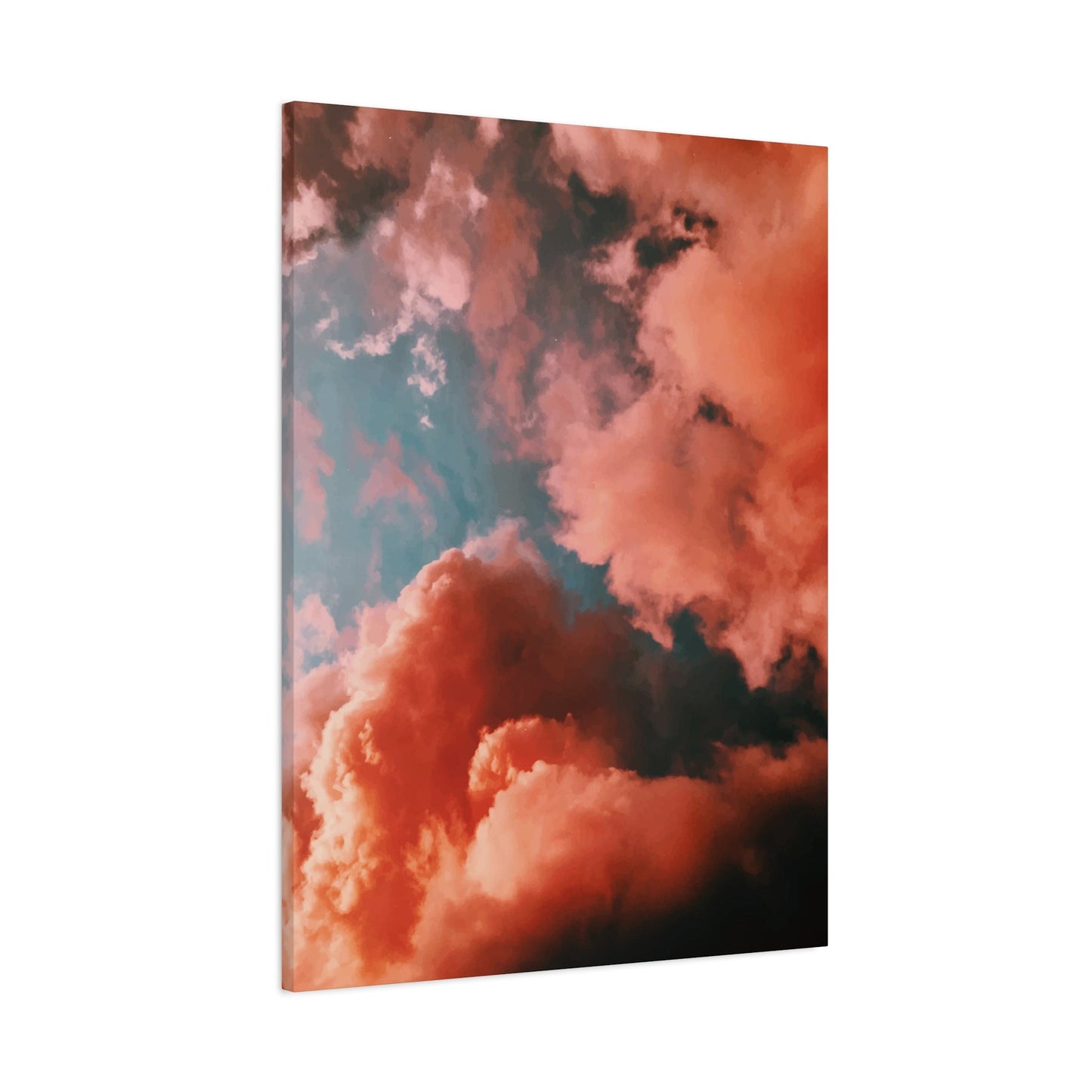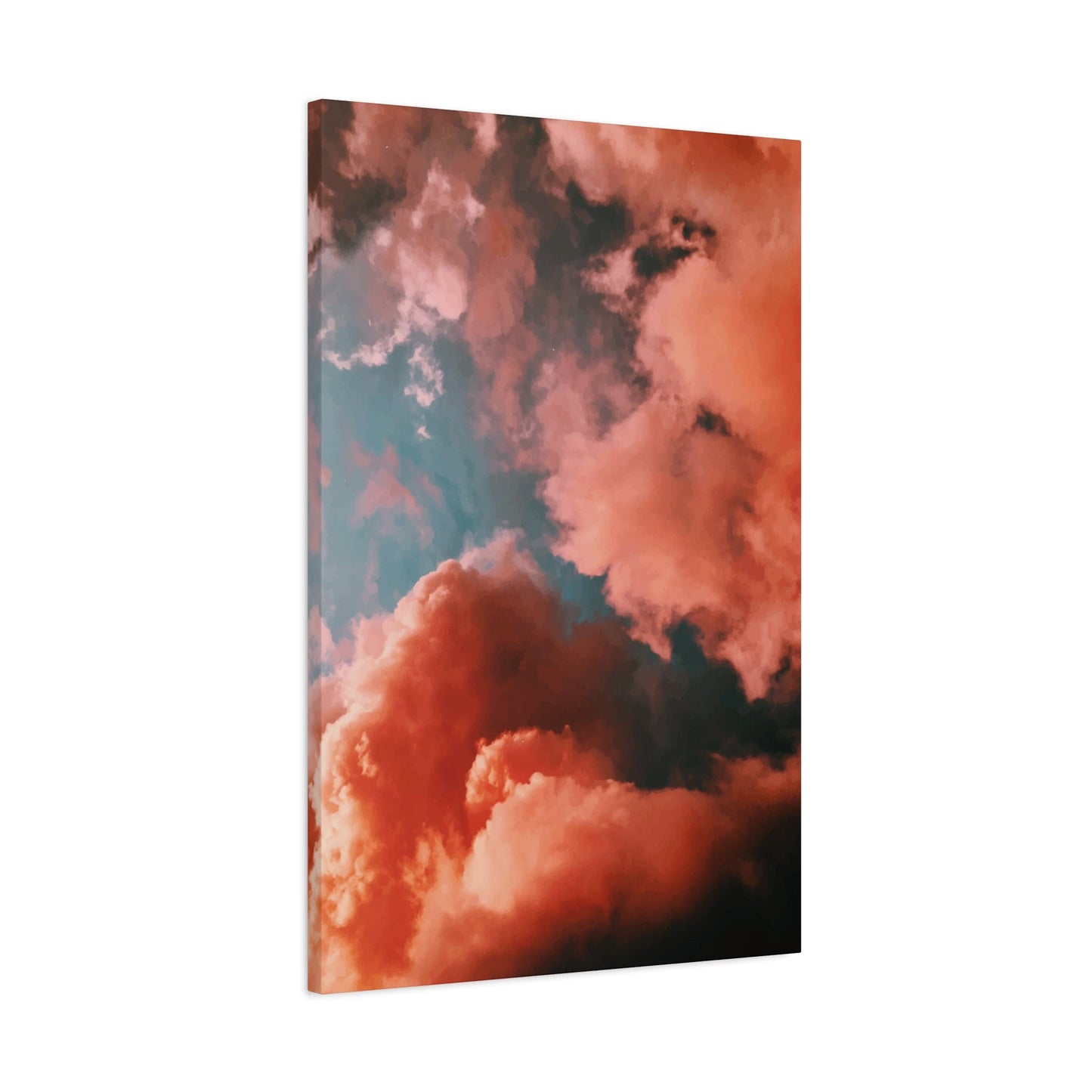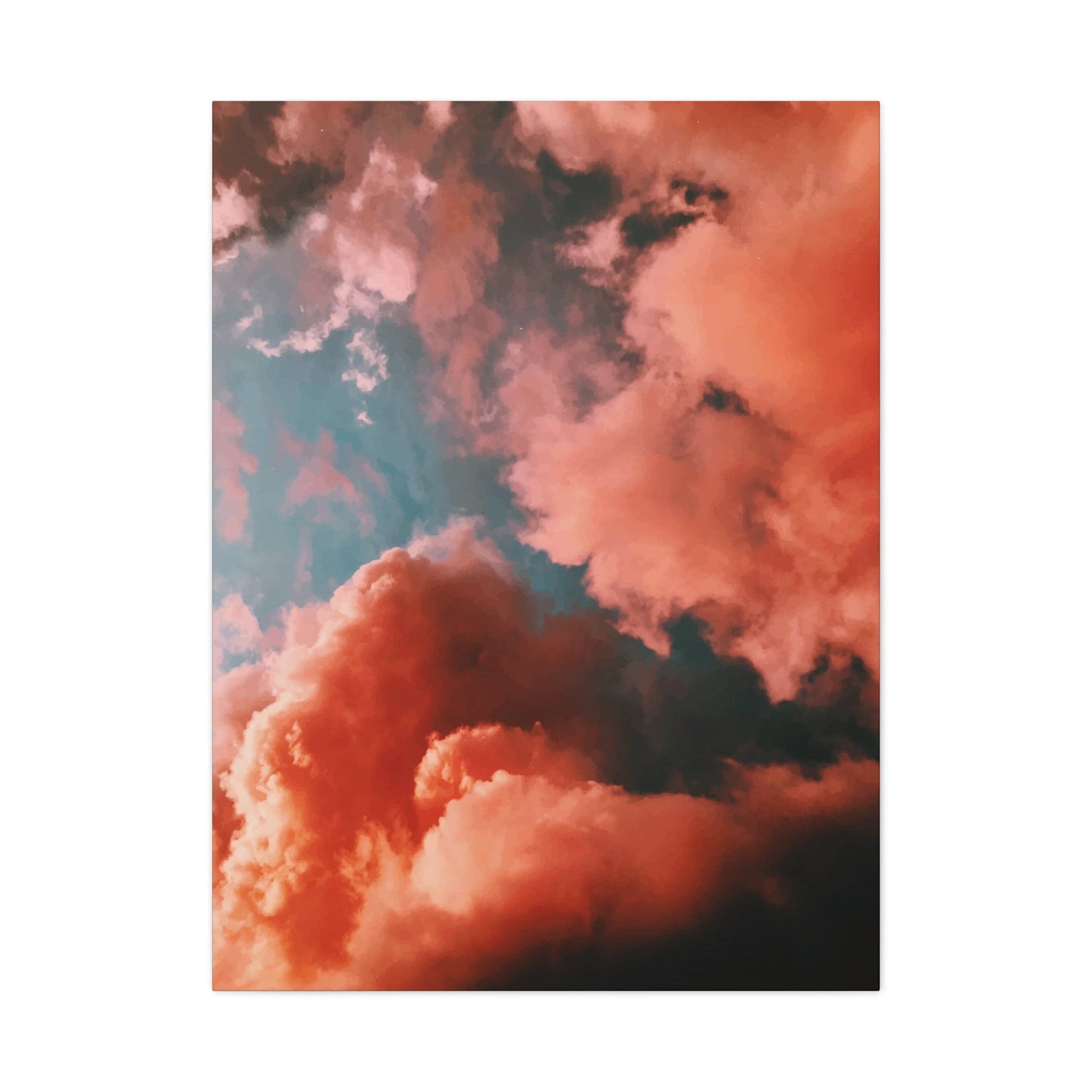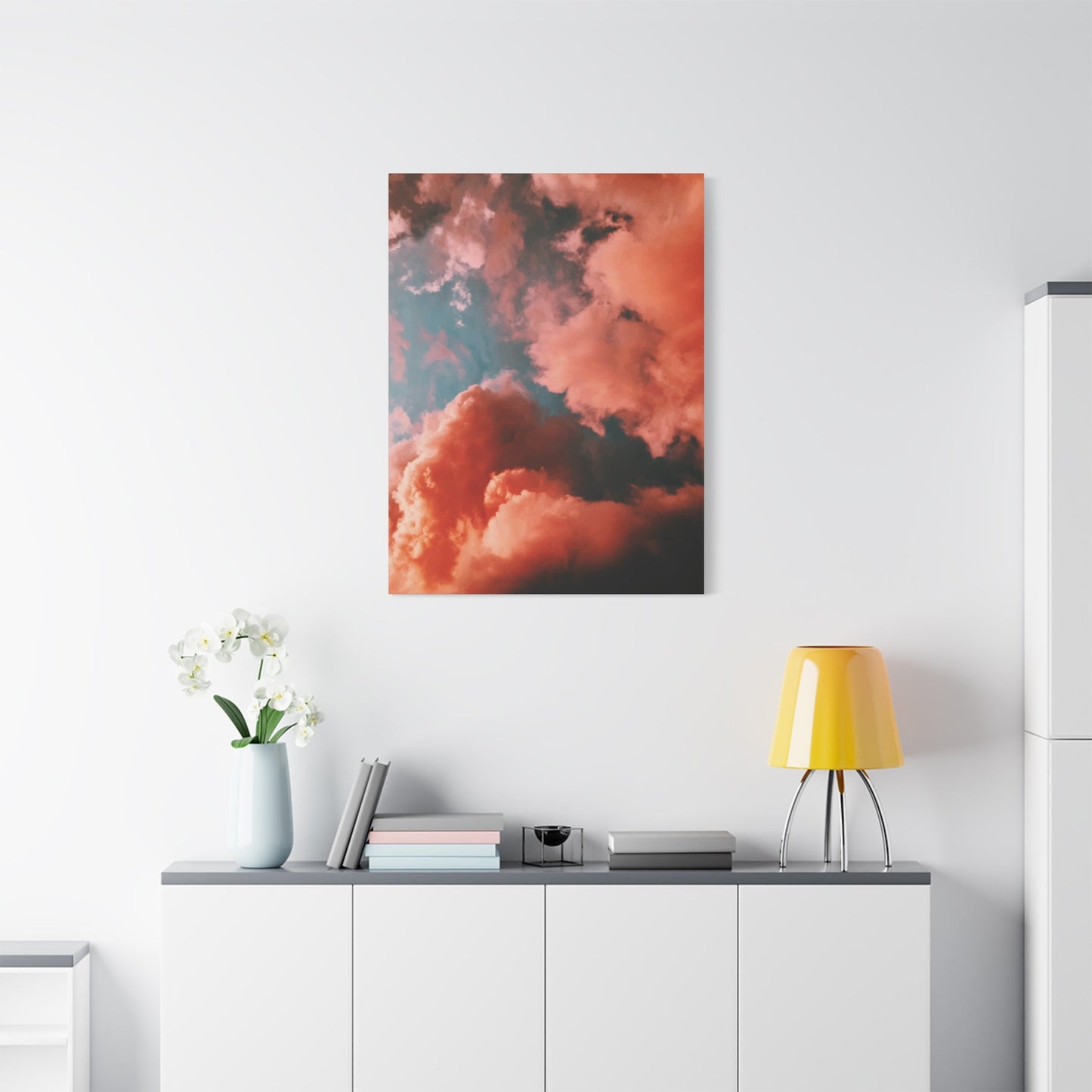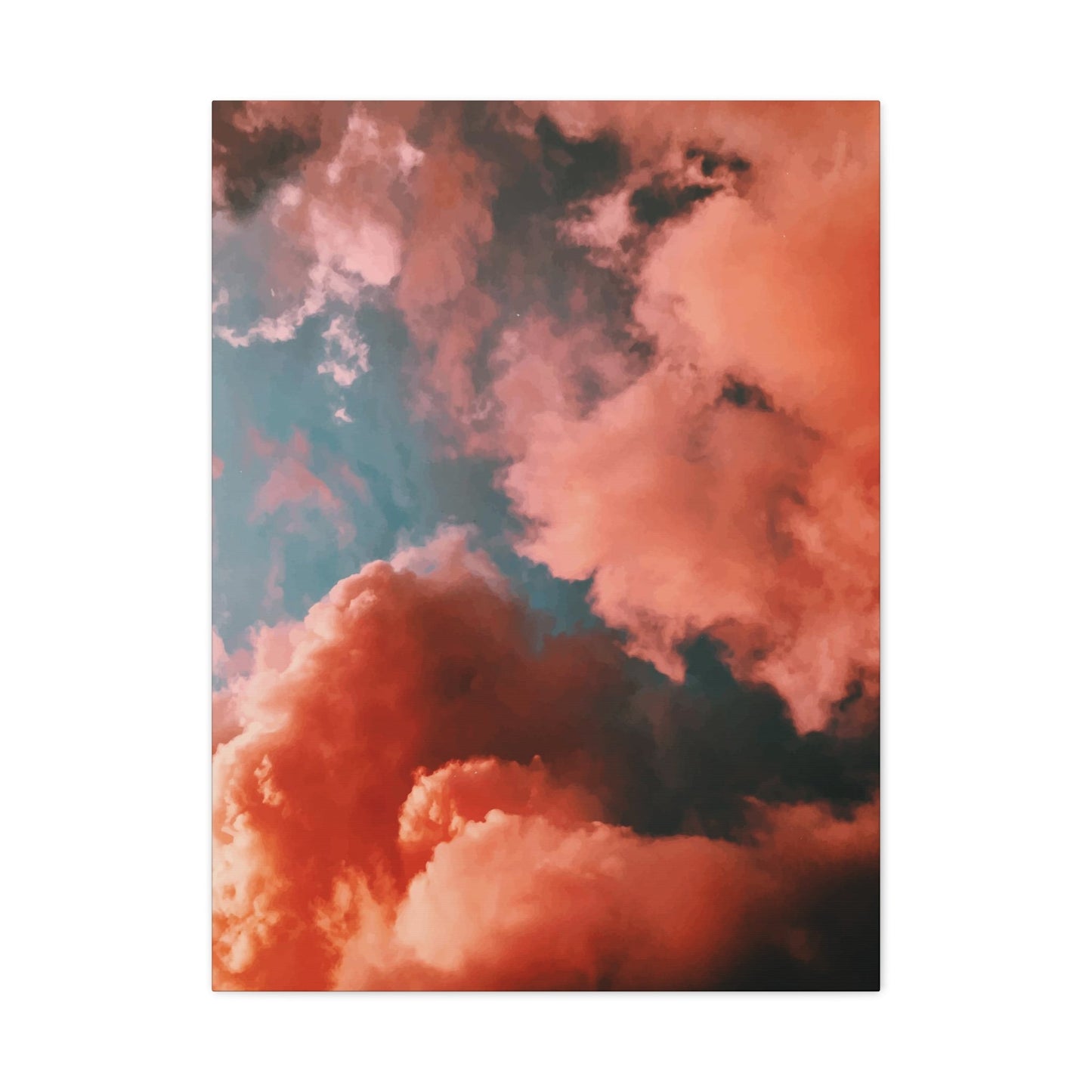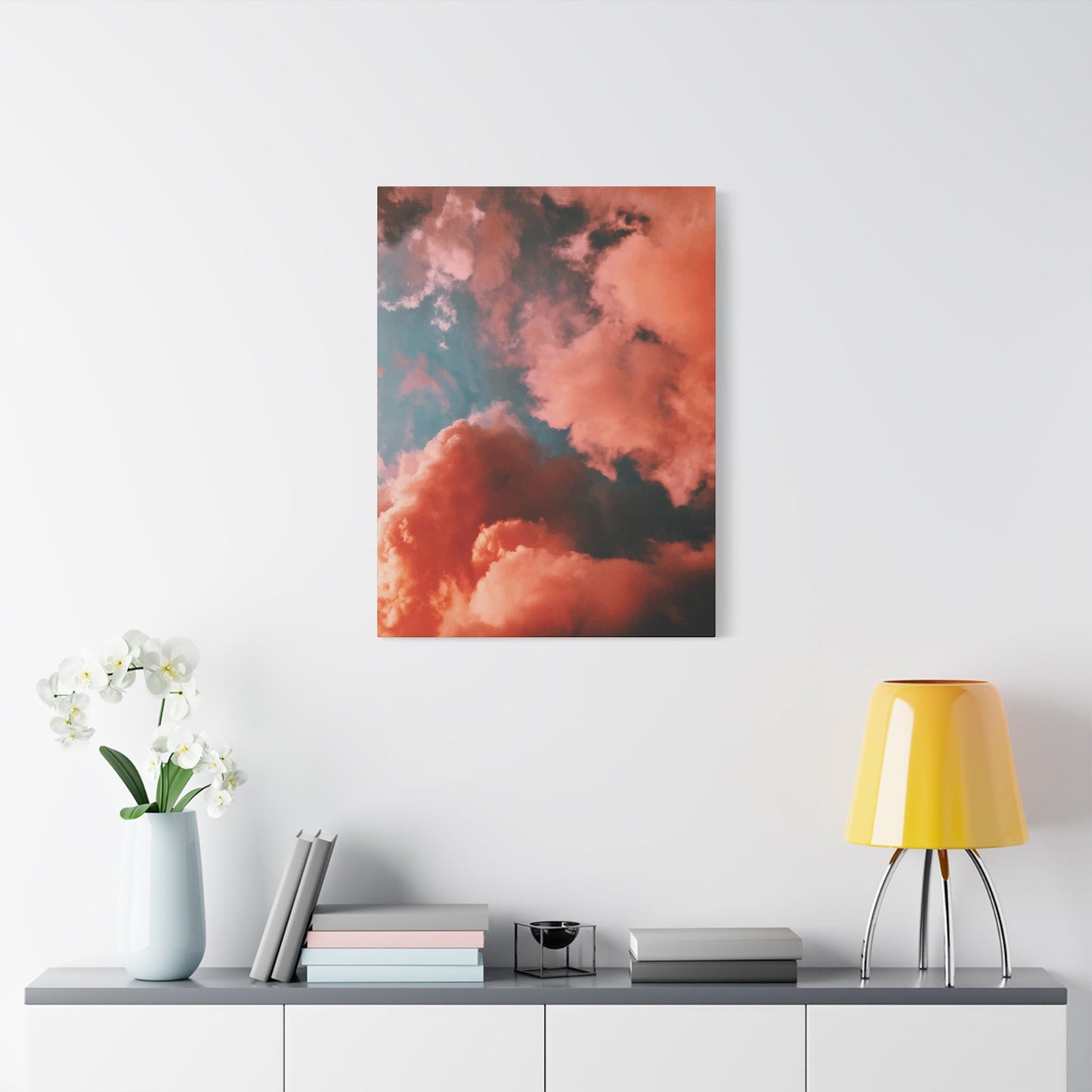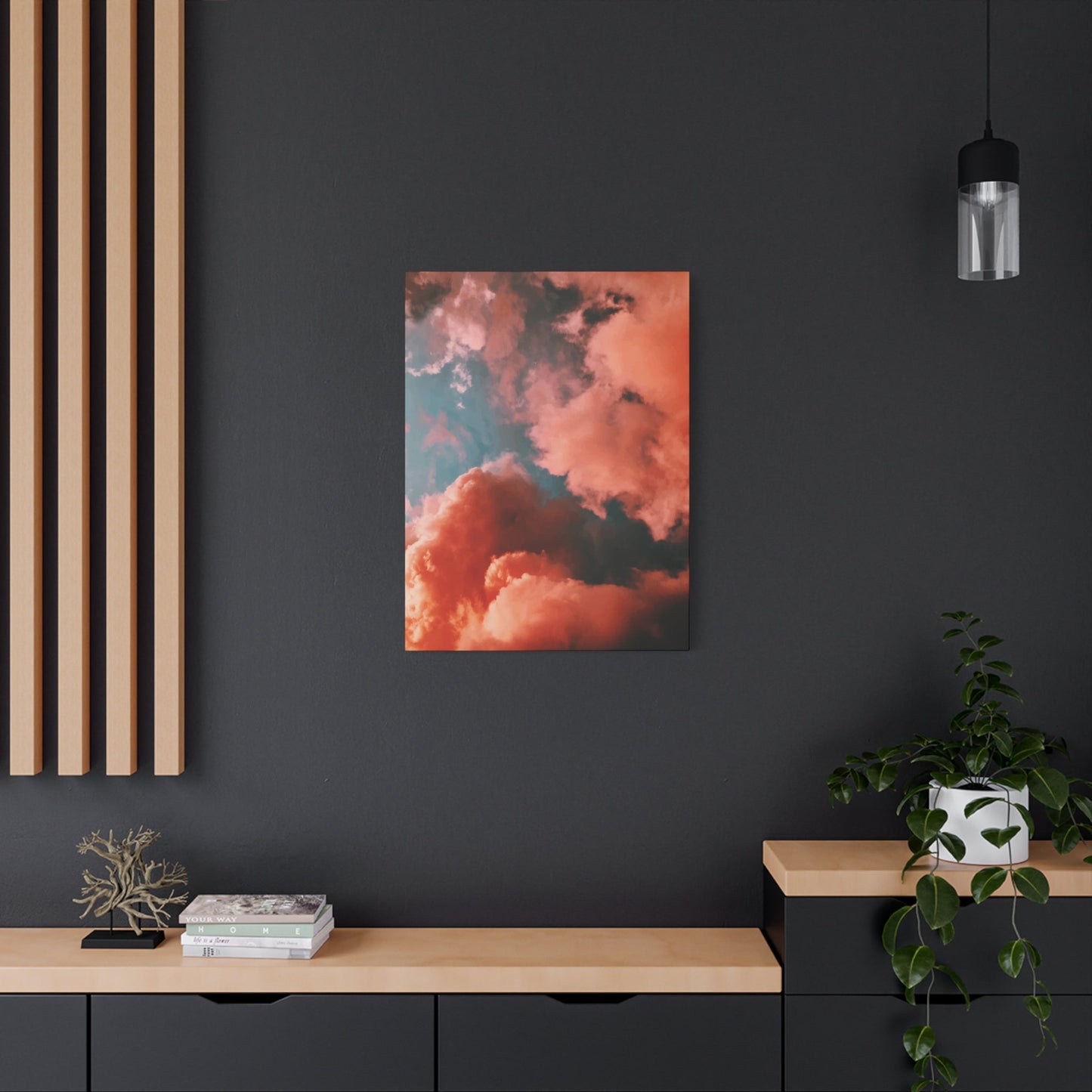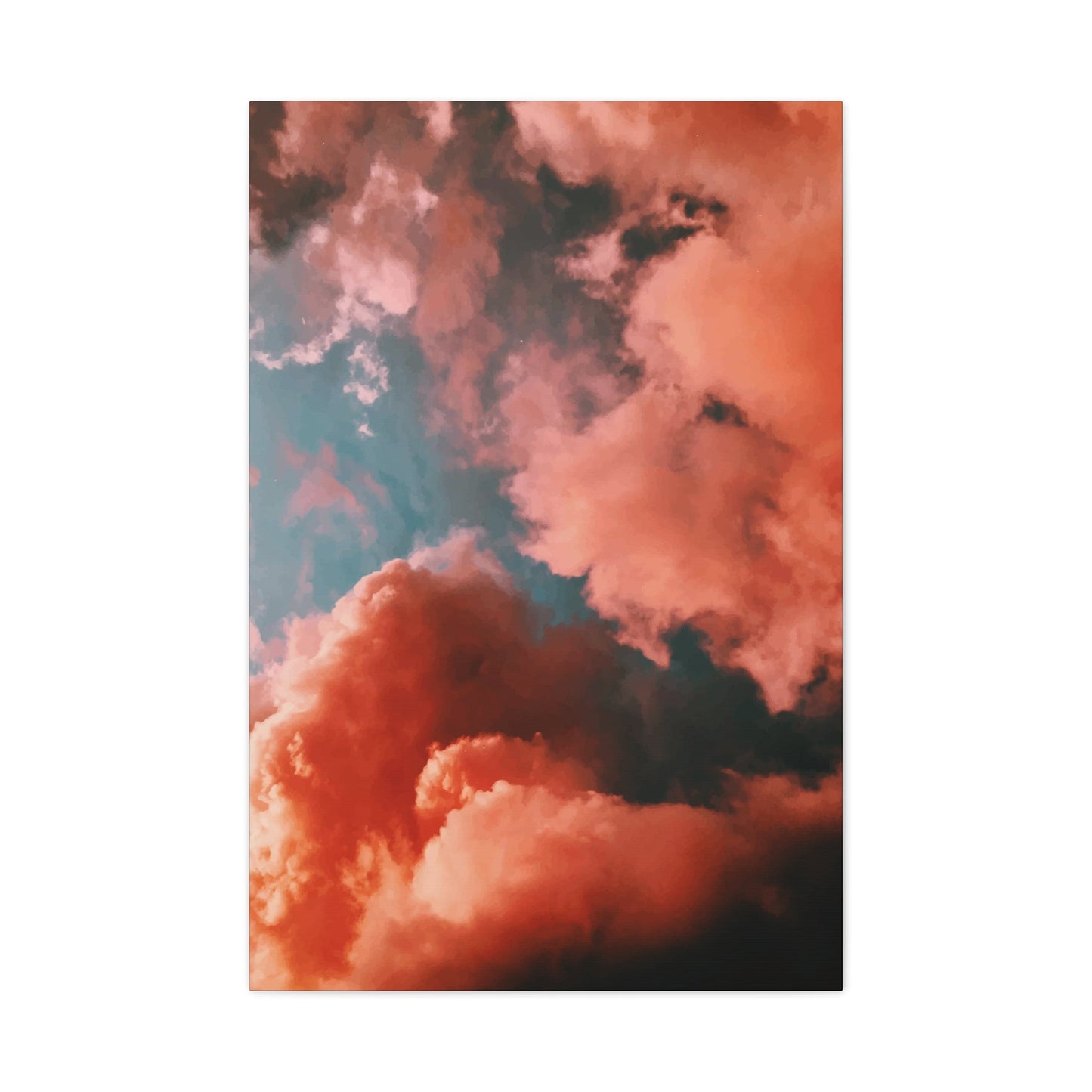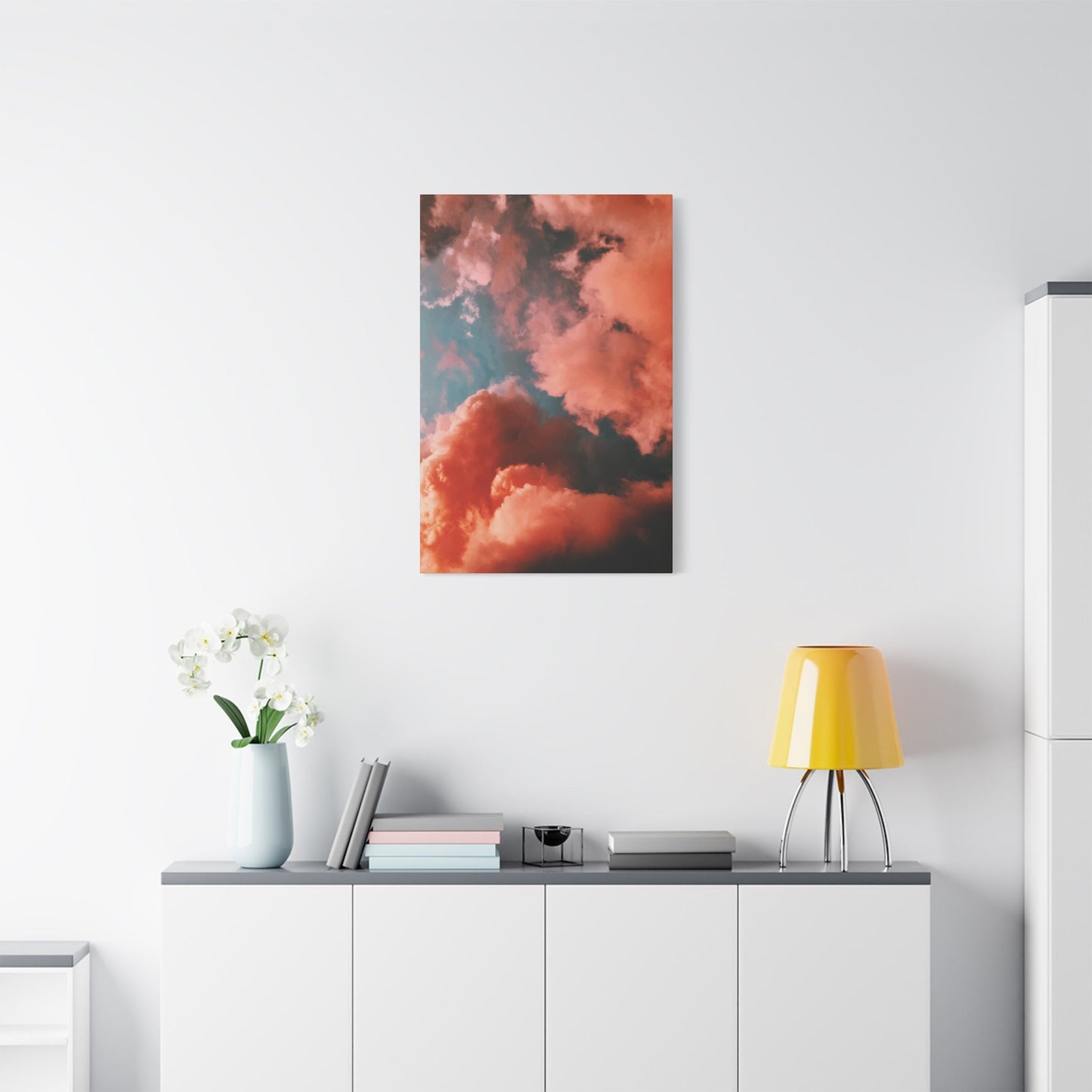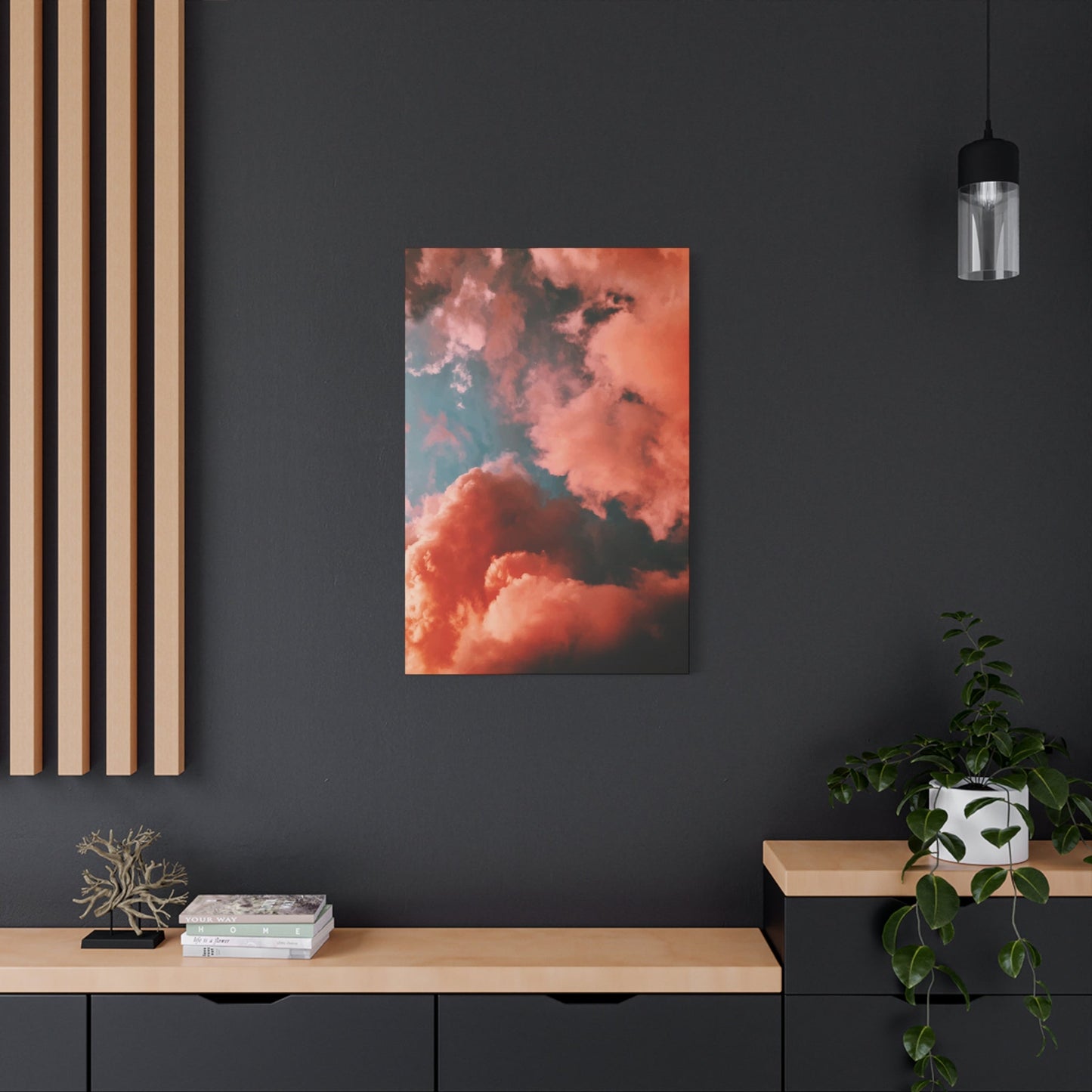Red Clouds Wall Art: Artistic Expressions from Natural Sky Phenomena
The magnificent spectacle of crimson-tinted clouds stretching across the horizon has captivated artists, photographers, and art enthusiasts for centuries. These natural phenomena serve as endless inspiration for creating breathtaking wall art that brings the drama and beauty of dramatic skies into residential and commercial environments. From traditional oil paintings to contemporary digital compositions, red clouds continue to dominate artistic expressions, offering viewers a connection to nature's most spectacular displays while transforming ordinary walls into windows to extraordinary atmospheric moments.
Scientific Foundations of Crimson Sky Phenomena During Dawn and Dusk
The appearance of red-colored clouds during sunrise and sunset represents one of nature's most scientifically fascinating displays. This phenomenon occurs due to the scattering of light through Earth's atmosphere, specifically through a process known as Rayleigh scattering. When sunlight travels through the atmosphere, it encounters tiny particles and molecules that scatter different wavelengths of light in various directions.
Blue light, having shorter wavelengths, gets scattered more easily by atmospheric particles, which explains why the sky appears blue during midday when the sun is directly overhead. However, during sunrise and sunset, sunlight must travel through much more of Earth's atmosphere to reach our eyes. This extended journey through atmospheric layers causes most of the blue light to be scattered away before it reaches us, leaving behind the longer wavelengths of red, orange, and yellow light.
The intensity and vibrancy of red clouds depend on several atmospheric conditions. Dust particles, water vapor, and pollution can enhance the scattering effect, creating more dramatic and intense red coloration. High-altitude clouds, particularly cirrus and altocumulus formations, provide excellent canvases for displaying these spectacular colors because they catch and reflect the filtered sunlight from above while remaining illuminated against darker portions of the sky.
Meteorological conditions play crucial roles in determining the appearance of red cloud formations. Clear atmospheric conditions with minimal water vapor typically produce more vivid red colorations, while humid conditions may create softer, more muted tones. The angle of the sun relative to the horizon also affects color intensity, with the most dramatic displays occurring when the sun sits between one and six degrees below the horizon.
Seasonal variations influence red cloud appearances as well. Autumn and winter months often provide more spectacular displays due to cleaner air conditions and different atmospheric compositions. The presence of ice crystals in high-altitude clouds during colder months can create additional optical effects, including enhanced reflection and refraction of the red-spectrum light.
Artists studying these scientific principles gain valuable insights for creating realistic representations of red cloud formations in their wall art. Understanding how atmospheric conditions affect color intensity, cloud illumination patterns, and the relationship between foreground and background elements enables artists to create more authentic and compelling compositions that capture the true essence of these natural phenomena.
Cultural and Artistic Symbolism of Crimson Cloud Formations
Throughout human history, red-tinted clouds have carried profound symbolic meaning across diverse cultures and artistic traditions. These atmospheric displays have been interpreted as divine messages, omens of change, representations of passion and emotion, and symbols of transformation and renewal. Artists have consistently drawn upon these rich symbolic associations to create meaningful wall art that resonates with viewers on both aesthetic and emotional levels.
In Western artistic traditions, red clouds often symbolize drama, passion, and intensity. Renaissance painters frequently incorporated dramatic red skies into religious scenes to convey divine presence or spiritual significance. The color red itself carries associations with love, power, danger, and vitality, making red cloud imagery particularly potent for conveying strong emotional states or significant narrative moments in artistic compositions.
Eastern cultures have their own interpretations of red sky phenomena. In Chinese art and philosophy, red clouds can represent good fortune, prosperity, and celebration. Traditional Chinese landscape paintings often feature red-tinged skies during scenes depicting festivals, important ceremonies, or moments of great joy. Japanese artistic traditions similarly view red clouds as auspicious symbols, particularly in contexts related to new beginnings and seasonal transitions.
Indigenous cultures worldwide have developed unique interpretations of red cloud formations. Many Native American traditions view red skies as communications from spiritual realms or ancestors. These beliefs have influenced contemporary Native American artists who incorporate red cloud imagery into modern wall art pieces that honor traditional spiritual connections while engaging with contemporary artistic practices.
The psychological impact of red cloud imagery in wall art cannot be understated. Color psychology research demonstrates that red tones can evoke feelings of excitement, energy, warmth, and passion while also potentially creating feelings of urgency or intensity. Artists creating wall art featuring red clouds must carefully balance these emotional responses to achieve desired atmospheric effects within living or working environments.
Modern artistic movements have reinterpreted traditional red cloud symbolism through contemporary lenses. Abstract expressionist artists use red cloud formations as metaphors for internal emotional states, while surrealist artists might employ red clouds to create dreamlike or otherworldly atmospheres. Environmental artists often use red cloud imagery to comment on climate change, pollution, or humanity's relationship with the natural world.
Contemporary wall art featuring red clouds continues to evolve, incorporating new symbolic meanings related to modern life experiences. Urban artists might use red cloud imagery to represent the relationship between natural beauty and industrial environments, while digital artists explore how technology can enhance or alter our perception of natural phenomena like dramatic sky displays.
Mastering Landscape Painting Techniques for Red Cloud Depictions
Creating convincing red cloud formations in landscape paintings requires mastering several fundamental artistic techniques and understanding how atmospheric perspective affects color relationships. Artists working in traditional media must develop skills in color mixing, brushwork, and compositional design to capture the ephemeral beauty of red-tinted skies effectively.
Color theory forms the foundation of successful red cloud painting. Artists must understand how to mix various red tones, from deep burgundy and crimson to bright orange-red and pink-tinged hues. Primary red pigments rarely appear in nature exactly as they come from the tube, so painters learn to modify these base colors with complementary tones, earth colors, and neutral grays to achieve naturalistic cloud coloration.
Atmospheric perspective principles are crucial for creating believable red cloud formations. Distant clouds appear cooler and less saturated than closer formations, while clouds directly overhead show the most intense coloration. Artists must gradually shift color temperature and saturation across their compositions to create convincing depth and dimensional relationships between different cloud layers.
Brushwork techniques vary depending on the desired effect and painting medium. Soft, blended brushstrokes work well for creating smooth gradations in cirrus cloud formations, while more textured brushwork can effectively capture the billowing, three-dimensional quality of cumulus clouds catching red light. Artists often employ multiple brush types within a single painting to achieve varied textural effects across different cloud formations.
Timing and color temperature relationships require careful consideration when painting red clouds. The warmest, most intense reds typically appear in clouds directly illuminated by the sun, while shadowed areas of the same clouds display cooler purples, blues, and grays. This color temperature contrast creates the dramatic visual impact that makes red cloud paintings so compelling.
Composition planning plays a vital role in successful red cloud landscape paintings. Artists must decide how much of the composition to dedicate to sky elements versus terrestrial features, ensuring that red cloud formations enhance rather than overwhelm other compositional elements. The rule of thirds often applies, with dramatic sky formations occupying either the upper two-thirds or lower two-thirds of the composition depending on the intended focal emphasis.
Layering techniques allow artists to build up complex color relationships gradually. Many successful red cloud paintings begin with initial washes of warm colors that establish the overall temperature and mood of the piece. Subsequent layers add specific cloud formations, detailed color variations, and final highlights that bring the sky to life.
Value relationships must be carefully controlled to prevent red cloud formations from appearing flat or unrealistic. Even in predominantly red cloud scenes, artists must maintain clear distinctions between light, medium, and dark values to create convincing three-dimensional forms. This often means making red clouds darker than they might appear in reality to maintain proper value relationships with other compositional elements.
Mythological and Folkloric Traditions Surrounding Red Skies
Red cloud formations have inspired countless mythological stories and folkloric traditions across cultures throughout human history. These atmospheric phenomena, with their dramatic appearance and relatively rare occurrence, naturally captured the imagination of people seeking explanations for extraordinary natural events. Understanding these cultural narratives provides contemporary artists with rich source material for creating wall art that connects with deep human storytelling traditions.
Ancient Greek mythology associated red skies with the gods, particularly Apollo and his daily journey across the heavens. Red-tinted clouds were often interpreted as signs of divine favor or displeasure, depending on the context and accompanying weather patterns. Greek pottery and wall paintings frequently depicted gods surrounded by dramatic red cloud formations, establishing visual conventions that continue to influence artistic representations today.
Norse mythology contributed its own interpretations of red sky phenomena, often connecting them to battles between gods or the approach of Ragnarök. The concept of blood-red skies as omens of conflict or change became deeply embedded in Northern European folklore, influencing artistic traditions that persist in contemporary Scandinavian art and design. These mythological associations make red cloud imagery particularly powerful for conveying themes of struggle, transformation, and epic narrative content.
Celtic traditions viewed red clouds as manifestations of otherworldly presence. Irish folklore speaks of red skies as gateways between the mortal world and the realm of the Aos Sí, or fairy folk. These beliefs influenced Celtic artistic traditions, including illuminated manuscripts and stone carvings that featured stylized red cloud formations as decorative and symbolic elements. Modern Celtic-inspired wall art continues to draw upon these traditional associations.
Asian mythological traditions offer different perspectives on red cloud phenomena. Chinese mythology often associates red clouds with dragons, particularly fire dragons whose presence was believed to create the dramatic coloration. Japanese folklore includes stories of red clouds as signs of spiritual activity, particularly in connection with mountain kami or nature spirits. These cultural associations have influenced traditional Asian art forms and continue to appear in contemporary artistic interpretations.
Biblical and Judeo-Christian traditions include numerous references to red skies and dramatic cloud formations as signs of divine communication or prophetic significance. The phrase "red sky at night, sailor's delight; red sky at morning, sailors take warning" reflects practical weather wisdom that became embedded in folkloric tradition. Religious art throughout history has incorporated red cloud imagery to convey spiritual themes and divine presence.
Indigenous traditions from various continents have developed unique interpretations of red cloud phenomena. Australian Aboriginal dreamtime stories include narratives about red skies and their connection to ancestral spirits and creation events. North American indigenous traditions often view red clouds as messages from animal spirits or ancestors, influencing traditional artistic expressions and contemporary Native American art that honors these cultural connections.
These mythological and folkloric traditions provide contemporary artists with rich symbolic vocabulary for creating meaningful wall art. By understanding cultural associations with red cloud imagery, artists can create pieces that resonate with viewers on multiple levels, connecting personal aesthetic appreciation with deeper cultural and spiritual meanings that have developed over millennia of human observation and storytelling.
Professional Photography Techniques for Capturing Dramatic Red Clouds
Photographing spectacular red cloud formations requires technical expertise, timing precision, and artistic vision to capture these fleeting atmospheric displays effectively. Professional photographers specializing in dramatic sky photography employ specific techniques and equipment to document red cloud phenomena for use in wall art applications, stock photography, and fine art prints.
Equipment selection plays a crucial role in successful red cloud photography. Wide-angle lenses allow photographers to capture expansive sky formations and their relationship to landscape elements, while telephoto lenses enable isolation of specific cloud formations for more intimate compositions. Graduated neutral density filters help balance exposure between bright sky areas and darker foreground elements, preventing blown highlights in red cloud formations while maintaining detail in terrestrial features.
Timing represents perhaps the most critical factor in red cloud photography. The optimal window for capturing red clouds typically occurs during the "golden hour" and "blue hour" periods surrounding sunrise and sunset. Photographers often arrive at shooting locations well before anticipated optimal conditions, using weather forecasting apps and atmospheric condition monitoring to predict when red cloud formations might occur.
Exposure techniques for red cloud photography require careful consideration of dynamic range and color saturation. Many photographers employ exposure bracketing to capture multiple images at different exposure levels, later combining them through HDR (High Dynamic Range) processing to achieve optimal detail in both highlight and shadow areas. Manual exposure control allows photographers to fine-tune settings for specific atmospheric conditions and desired artistic effects.
Composition strategies for red cloud photography often emphasize the relationship between dramatic sky formations and terrestrial elements. The rule of thirds frequently applies, with horizon lines placed at either the upper or lower third of the frame to maximize impact of dramatic sky displays. Leading lines, silhouetted foreground elements, and reflective surfaces like water bodies can enhance compositional strength and visual interest.
Post-processing techniques for red cloud photography involve careful color grading and contrast enhancement to bring out the natural drama of these atmospheric displays without creating unrealistic or over-saturated results. Professional photographers often work in RAW format to maintain maximum flexibility during post-processing, allowing precise control over color temperature, saturation, and luminosity adjustments.
Seasonal and geographic considerations affect red cloud photography opportunities. Certain locations and times of year provide more favorable conditions for dramatic red cloud formations. Photographers often research locations known for spectacular sunrise and sunset displays, planning shooting trips around seasons when atmospheric conditions favor red cloud development.
Weather forecasting and atmospheric monitoring have become essential skills for red cloud photographers. Understanding cloud types, wind patterns, and atmospheric pressure systems helps photographers predict when conditions might produce spectacular red cloud displays. Many professionals use specialized weather apps and satellite imagery to track developing weather systems and position themselves for optimal shooting opportunities.
Safety considerations become important when photographing red clouds, particularly during dawn and dusk periods in unfamiliar locations. Photographers must plan routes, inform others of their shooting schedules, and carry appropriate safety equipment when working in remote locations or challenging terrain during low-light conditions.
Meteorological Interpretation and Weather Prediction Through Red Cloud Formations
Red cloud formations serve as valuable indicators for weather prediction and atmospheric condition assessment, providing both professional meteorologists and casual observers with visual clues about approaching weather systems. Understanding these meteorological relationships enhances appreciation for red cloud imagery in wall art while providing practical knowledge about atmospheric science and weather pattern recognition.
The relationship between red cloud formations and barometric pressure creates predictable patterns that experienced weather observers learn to recognize. High-pressure systems often produce clear atmospheric conditions that enhance red cloud visibility during sunrise and sunset periods, while approaching low-pressure systems may create different cloud formations and coloration patterns that signal changing weather conditions.
Wind patterns significantly influence red cloud formation and appearance. Upper-level winds affect cloud shape, movement, and distribution patterns, while surface winds influence atmospheric clarity and particle distribution that affects color intensity. Artists studying red cloud formations for wall art applications benefit from understanding how wind patterns create specific cloud shapes and movement characteristics.
Humidity levels affect both red cloud formation and color intensity. Lower humidity conditions typically produce more vivid red coloration due to reduced water vapor in the atmosphere, while higher humidity may create more diffused, pastel-toned effects. These humidity-related variations provide artists with different aesthetic options for red cloud wall art depending on desired mood and atmospheric effects.
Seasonal weather patterns influence the frequency and characteristics of red cloud displays. Autumn months often provide optimal conditions for spectacular red cloud formations due to changing air mass characteristics and cleaner atmospheric conditions following summer storm systems. Winter months may produce different types of red cloud displays associated with cold front passages and different atmospheric compositions.
Temperature gradients between different atmospheric layers create various cloud types that display red coloration differently. Cirrus clouds at high altitudes may show brilliant red colors while lower cumulus formations appear more muted, creating layered effects that add depth and visual interest to sky displays. Understanding these temperature-related phenomena helps artists create more realistic and scientifically accurate red cloud representations.
Pollution and atmospheric particle content affect red cloud appearance in complex ways. While some types of atmospheric particles can enhance red coloration through increased light scattering, heavy pollution may diminish color intensity and clarity. Artists working in urban environments may need to account for these atmospheric effects when creating wall art based on local red cloud observations.
Frontal system movements create specific patterns of red cloud development and dissipation. Cold fronts often produce dramatic red cloud displays as they approach, followed by rapid clearing conditions. Warm fronts may create more gradual red cloud developments with different characteristics. Understanding these frontal relationships helps predict optimal timing for both photography and artistic observation of red cloud phenomena.
Regional climate characteristics influence typical red cloud patterns and seasonal timing. Desert regions may experience different red cloud phenomena compared to coastal areas or mountainous regions. Artists creating location-specific wall art can research local meteorological patterns to ensure accurate representation of regional red cloud characteristics and seasonal variations.
Historical Masterpieces Featuring Crimson Sky Elements
Throughout art history, numerous masterpieces have featured red cloud formations as central compositional elements, demonstrating the enduring appeal and artistic potential of these dramatic atmospheric displays. These historical works provide inspiration and technical reference for contemporary artists creating red cloud wall art, while illustrating various approaches to depicting crimson sky phenomena across different artistic movements and cultural contexts.
J.M.W. Turner's revolutionary approach to painting red clouds and dramatic skies influenced generations of landscape artists. His works such as "The Fighting Temeraire" and "Rain, Steam and Speed" showcase innovative techniques for capturing the luminous quality of red-tinted atmospheric conditions. Turner's loose brushwork and bold color choices demonstrated how red cloud formations could convey emotional content and narrative meaning while maintaining atmospheric authenticity.
Claude Monet's exploration of changing light conditions included numerous studies of red cloud formations during different times of day and seasons. His series paintings of haystacks, cathedrals, and water lilies often featured dramatic red sky backgrounds that demonstrated how atmospheric conditions could transform the appearance of familiar subjects. Monet's systematic approach to color temperature and atmospheric perspective provides valuable lessons for contemporary red cloud artists.
The Hudson River School painters, including Thomas Cole and Frederic Edwin Church, created monumental landscape paintings that frequently featured spectacular red cloud formations over American wilderness scenes. These works established visual conventions for depicting red clouds in relationship to specific geographical features and landscape types, influencing American landscape painting traditions that continue today.
European Romantic painters used red cloud imagery to convey emotional intensity and sublime natural experiences. Caspar David Friedrich's dramatic landscapes often featured small human figures contemplating expansive skies filled with red-tinted clouds, creating powerful meditations on humanity's relationship with nature. These Romantic approaches to red cloud imagery continue to influence contemporary wall art that seeks to evoke emotional responses through natural imagery.
Pre-Raphaelite painters brought intense color sensitivity and detailed naturalistic observation to red cloud depictions. Artists like John Everett Millais and Dante Gabriel Rossetti created works featuring meticulously observed red cloud formations that combined scientific accuracy with symbolic meaning. Their attention to color relationships and atmospheric detail provides technical inspiration for realistic red cloud wall art.
Impressionist and Post-Impressionist artists experimented with various approaches to red cloud representation, from Claude Monet's atmospheric studies to Vincent van Gogh's expressive, emotionally charged sky paintings. Van Gogh's "Starry Night" and other works featuring dramatic red and orange sky elements demonstrate how red cloud imagery could serve expressive rather than purely representational purposes.
American Western artists, including Albert Bierstadt and Thomas Moran, created epic landscape paintings featuring red cloud formations over dramatic Western American scenery. These works established visual traditions for depicting red clouds in relationship to specific geographical regions and helped define American artistic identity through landscape imagery.
Contemporary art historians continue to study these historical masterpieces for insights into technical approaches, cultural meanings, and artistic innovations in red cloud depiction. Modern artists creating wall art featuring red clouds can learn from these historical examples while developing their own contemporary interpretations of these timeless atmospheric phenomena.
Creative Inspiration and Design Applications for Red Cloud Wall Art
Red cloud formations offer endless creative possibilities for wall art applications, inspiring artists to explore various aesthetic approaches, stylistic interpretations, and design solutions that bring the drama and beauty of dramatic skies into residential and commercial environments. Contemporary artists draw inspiration from these natural phenomena to create diverse artistic expressions that range from realistic representations to abstract interpretations and everything in between.
Realistic red cloud wall art appeals to viewers who appreciate naturalistic representation and want to bring authentic atmospheric beauty into their living environments. Artists working in this style focus on accurate color relationships, convincing three-dimensional forms, and scientifically sound atmospheric perspective to create pieces that function as windows to spectacular natural moments. These works often feature carefully observed cloud formations, accurate light conditions, and realistic landscape settings.
Abstract interpretations of red cloud phenomena allow artists to explore emotional and symbolic content while maintaining visual connections to natural atmospheric displays. Abstract red cloud wall art might emphasize color relationships, gestural brushwork, or simplified forms that capture the essential energy and mood of dramatic sky displays without literal representation. These approaches appeal to viewers who prefer contemporary aesthetic sensibilities while maintaining connections to natural inspiration.
Mixed media applications enable artists to combine traditional painting techniques with digital manipulation, collage elements, or three-dimensional components to create unique red cloud wall art. These hybrid approaches can incorporate photography, digital printing, textural elements, and various artistic media to create pieces that engage viewers through multiple sensory and visual channels.
Color palette variations allow artists to explore different moods and aesthetic approaches within red cloud themes. While traditional red cloud imagery emphasizes warm colors, artists can explore cooler interpretations, monochromatic treatments, or complementary color schemes that maintain compositional relationships while offering unique visual experiences. These palette variations enable red cloud wall art to coordinate with diverse decorating schemes and personal preferences.
Scale considerations affect how red cloud wall art functions in different architectural environments. Large-scale pieces can create dramatic focal points and transform entire rooms, while smaller works might serve as intimate accent pieces or components in gallery wall arrangements. Artists must consider viewing distances, room proportions, and lighting conditions when designing red cloud wall art for specific applications.
Stylistic approaches to red cloud wall art encompass numerous artistic movements and aesthetic philosophies. Impressionist-inspired treatments emphasize light effects and color relationships, while expressionist approaches might focus on emotional content and bold visual impact. Contemporary artists might incorporate minimalist principles, pop art sensibilities, or street art influences into their red cloud interpretations.
Seasonal and temporal variations provide ongoing inspiration for red cloud wall art series and collections. Artists can explore how red cloud formations appear during different seasons, times of day, or weather conditions, creating bodies of work that celebrate the diversity and complexity of atmospheric phenomena. These variations enable collectors to build comprehensive collections or rotate pieces according to seasonal preferences.
Technical innovation continues to expand possibilities for red cloud wall art creation and presentation. Digital printing technologies enable reproduction of photographic red cloud captures at various scales and on diverse substrates. LED backlighting can enhance certain types of red cloud wall art, creating dynamic lighting effects that change throughout the day. Augmented reality applications might allow viewers to interact with red cloud wall art through digital devices.
Literary and Poetic Expressions of Red Cloud Imagery
Red cloud formations have inspired countless writers, poets, and literary artists throughout history, serving as powerful metaphors for emotion, change, beauty, and the sublime aspects of natural experience. These literary expressions provide rich source material for visual artists creating red cloud wall art, offering narrative content, emotional depth, and cultural resonance that can enhance visual compositions through textual associations.
Romantic poetry frequently employed red cloud imagery to convey passionate emotions and dramatic natural experiences. Poets like Lord Byron, Percy Shelley, and William Wordsworth used descriptions of red-tinged skies to create atmospheric settings for emotional revelation and spiritual contemplation. Their vivid language and emotional intensity provide inspiration for wall art that seeks to capture similar feelings through visual means.
Contemporary poetry continues to explore red cloud themes through modern sensibilities and language. Environmental poets often use red cloud imagery to address climate change, pollution, and humanity's relationship with the natural world. These contemporary perspectives provide relevant context for modern wall art that engages with current environmental and social concerns while celebrating natural beauty.
Prose literature has incorporated red cloud descriptions to establish mood, foreshadow narrative events, and create memorable atmospheric settings. Authors from Charles Dickens to Toni Morrison have used red sky imagery to enhance storytelling and create vivid scene-setting that lingers in readers' imagination. Visual artists can draw from these literary precedents to create wall art that tells stories through atmospheric imagery.
Haiku and other short poetic forms offer concentrated expressions of red cloud observations that translate effectively into visual art compositions. The economy and precision of haiku parallels the challenge of capturing fleeting atmospheric moments in visual art, making these poetic forms particularly relevant for red cloud wall art that emphasizes simplicity and essential visual elements.
Cross-cultural literary traditions provide diverse perspectives on red cloud symbolism and meaning. Japanese poetry, Chinese literature, and various indigenous oral traditions offer alternative interpretations of red sky phenomena that can inform multicultural approaches to red cloud wall art. These diverse literary sources expand the symbolic vocabulary available to contemporary artists.
Song lyrics and musical compositions often reference red clouds and dramatic skies, creating popular cultural associations that resonate with broad audiences. Artists creating red cloud wall art for commercial applications can consider these musical connections when developing pieces intended for public or hospitality environments where familiar cultural references enhance viewer engagement.
Literary analysis of red cloud imagery reveals common themes including transformation, passion, warning, beauty, and spiritual significance. These thematic associations provide conceptual frameworks for organizing red cloud wall art collections or developing series of related works that explore specific aspects of red cloud symbolism and meaning.
Collaborative projects between visual artists and writers can create multimedia wall art installations that combine red cloud imagery with textual elements. These collaborations might incorporate poetry, prose passages, or original writing that responds to visual red cloud compositions, creating rich artistic experiences that engage multiple sensory channels and cultural traditions simultaneously.
Psychological and Emotional Effects of Red Sky Imagery in Artistic Contexts
The psychological impact of red cloud imagery in wall art extends far beyond aesthetic appreciation, engaging viewers on deep emotional and physiological levels that affect mood, energy, and overall environmental experience. Understanding these psychological effects enables artists to create red cloud wall art that serves specific purposes within residential, commercial, and institutional settings while considering the wellbeing and comfort of viewers.
Color psychology research demonstrates that red tones can stimulate energy, passion, and excitement while also potentially creating feelings of urgency or intensity. Red cloud wall art must balance these stimulating effects with the calming, contemplative qualities often associated with sky imagery and natural landscapes. Successful pieces achieve harmony between energizing red colors and peaceful atmospheric content.
Circadian rhythm responses to red light have been studied extensively, revealing that warm red tones can affect sleep patterns and daily energy cycles. Red cloud wall art placed in bedrooms or relaxation areas should consider these physiological effects, potentially emphasizing cooler red tones or incorporating balancing cool colors to prevent overstimulation during rest periods.
Stress reduction benefits of nature imagery extend to red cloud wall art that successfully captures the calming aspects of natural sky displays. Research on nature-based art therapy indicates that realistic representations of natural phenomena can reduce stress hormones, lower blood pressure, and promote relaxation responses. Red cloud wall art designed for healthcare settings or high-stress environments should emphasize these therapeutic qualities.
Cultural associations with red colors vary significantly across different ethnic and regional backgrounds, affecting individual responses to red cloud wall art. Artists creating pieces for diverse audiences must consider these cultural variations and potentially develop works that acknowledge different cultural perspectives on red color symbolism and meaning.
Seasonal affective responses to color and light make red cloud wall art particularly valuable during darker months when natural sunlight exposure is limited. The warm, energizing qualities of red cloud imagery can help counteract seasonal depression and maintain emotional wellbeing during periods of reduced natural light exposure.
Personal memory associations with dramatic sky experiences often create strong emotional responses to red cloud wall art. Viewers may connect red cloud imagery with specific meaningful experiences, travel memories, or significant life events, making these artistic works powerful triggers for positive emotional states and personal reflection.
Therapeutic applications of red cloud wall art in healthcare and counseling settings require careful consideration of color intensity, composition balance, and viewing context. Medical facilities might benefit from red cloud imagery that emphasizes healing, hope, and positive energy while avoiding overstimulating effects that could increase patient anxiety or discomfort.
Workplace environments can benefit from red cloud wall art that promotes creativity, energy, and inspiration while maintaining professional atmospheres. The key lies in selecting pieces that energize without overwhelming, inspiring creative thinking while supporting focused work activities.
Age-related responses to red cloud imagery may vary, with younger viewers potentially more stimulated by intense red colors while older viewers might prefer more subtle, contemplative treatments. Artists creating red cloud wall art for intergenerational spaces must balance these different age-related preferences and responses.
Digital Art and Contemporary Abstract Interpretations of Red Cloud Themes
Digital technology has revolutionized artistic approaches to red cloud imagery, enabling artists to create innovative wall art that combines traditional aesthetic appreciation for dramatic skies with contemporary digital tools and abstract artistic sensibilities. These modern interpretations expand the possibilities for red cloud wall art while engaging with current technological and artistic trends.
Digital painting software allows artists to explore red cloud formations through virtual brushwork that can achieve effects impossible with traditional media. Layered digital compositions enable complex color blending, atmospheric effects, and manipulated lighting conditions that push beyond naturalistic representation while maintaining visual connections to red cloud phenomena. These digital tools enable artists to create unique interpretations that bridge realism and abstraction.
Photographic manipulation and digital compositing open new avenues for red cloud wall art that combines multiple source images, enhanced color treatments, and surreal atmospheric effects. Artists can blend different sky captures, adjust color relationships beyond natural limits, and create impossible atmospheric conditions that maintain aesthetic appeal while exploring imaginative possibilities.
Generative art algorithms can create red cloud imagery through mathematical processes and artificial intelligence tools, producing unique compositions that might not occur through traditional artistic methods. These computer-generated approaches to red cloud wall art appeal to viewers interested in technology-art intersections while creating pieces that maintain organic visual qualities despite digital origins.
Abstract expressionist approaches to red cloud themes emphasize emotional content and gestural qualities rather than realistic representation. Digital artists can explore abstract red cloud concepts through non-representational color relationships, dynamic compositions, and expressive digital brushwork that captures the energy and mood of dramatic sky displays without literal imagery.
Interactive digital red cloud wall art incorporates sensors, lighting systems, or display technologies that respond to viewer presence or environmental conditions. These installations might change color intensity based on room lighting, respond to movement through color shifts, or cycle through different red cloud compositions throughout the day, creating dynamic artistic experiences that evolve over time.
Mixed reality applications enable red cloud wall art that combines physical and digital elements through augmented reality technologies. Viewers might use mobile devices or AR glasses to see additional digital layers, animations, or information overlaid on traditional red cloud wall art, creating hybrid artistic experiences that engage multiple technological platforms.
3D rendering and virtual reality technologies allow artists to create immersive red cloud environments that surround viewers with dramatic atmospheric conditions. These virtual red cloud experiences can serve as inspiration for traditional wall art or function as standalone digital art installations that transport viewers into spectacular sky environments.
Animation and time-lapse techniques enable red cloud wall art that captures the dynamic, changing nature of atmospheric phenomena through moving imagery. Digital displays can showcase red cloud formations that evolve, shift, and transform over time, creating wall art that maintains visual interest through constant change while celebrating the temporal aspects of sky phenomena.
Collaborative digital platforms enable multiple artists to contribute to red cloud wall art projects, creating crowdsourced or community-based artistic works that incorporate diverse perspectives and techniques. These collaborative approaches can result in complex, layered compositions that reflect multiple artistic voices while maintaining coherent red cloud themes.
Traditional and Contemporary Painting Methods for Realistic Cloud Rendering
Mastering the artistic techniques required to create convincing red cloud formations demands understanding both traditional painting methods developed over centuries and contemporary innovations that expand creative possibilities. Artists seeking to create realistic red cloud wall art must develop technical skills across various media while understanding how different approaches affect final aesthetic results and viewer experience.
Oil painting techniques for red cloud rendering offer unparalleled color richness and blending capabilities that make them ideal for capturing the luminous quality of atmospheric phenomena. Traditional oil painting methods include glazing techniques that build up transparent color layers to achieve deep, saturated red tones, and alla prima approaches that capture red cloud formations through direct, immediate brushwork that preserves spontaneity and energy.
Acrylic painting provides versatility and quick-drying properties that enable artists to work in layers while maintaining color clarity and intensity. Modern acrylic formulations include specialized mediums that extend working time, enhance blending capabilities, and create texture effects that add three-dimensional quality to red cloud formations. Acrylic techniques can achieve both smooth, gradient effects and textured, impasto treatments depending on artistic intentions.
Watercolor methods for red cloud painting emphasize transparency and color luminosity that can effectively capture the ethereal quality of atmospheric displays. Traditional watercolor techniques include wet-on-wet applications that create soft, blended effects perfect for distant cloud formations, and wet-on-dry methods that enable precise color placement and sharp edge definition for foreground cloud elements.
Pastel drawing offers unique advantages for red cloud artwork through direct color application and blending capabilities that can achieve both soft atmospheric effects and intense color saturation. Soft pastels enable smooth color gradations and subtle value transitions, while oil pastels provide more intense color coverage and impasto effects that add textural interest to cloud formations.
Mixed media approaches combine various painting materials to achieve effects impossible with single media. Artists might combine oil painting for detailed cloud structures with acrylic backgrounds for quick coverage, or integrate watercolor washes with pastel details to create complex color relationships and textural variety within red cloud compositions.
Contemporary painting innovations include specialized pigments, mediums, and application tools that expand traditional possibilities. Interference colors create iridescent effects that mimic atmospheric light phenomena, while texture gels enable three-dimensional surface treatments that add physical dimension to painted cloud formations. Digital-traditional hybrid approaches might combine painted elements with printed digital components.
Color mixing techniques for red cloud painting require understanding both theoretical color relationships and practical pigment behavior. Artists must master mixing various red tones from cadmium reds and alizarin crimsons to quinacridone and pyrrol reds, understanding how each pigment family behaves in mixtures and how they interact with complementary colors to create realistic atmospheric effects.
Brushwork approaches vary according to desired effects and painting scale. Large, soft brushes enable smooth color gradations across expansive sky areas, while smaller, stiffer brushes can create textural effects that suggest cloud volume and atmospheric density. Specialized techniques like dry brushing, stippling, and crosshatching can add surface interest and atmospheric complexity to red cloud formations.
Surface preparation affects paint adhesion, color appearance, and longevity of red cloud paintings. Canvas priming, paper selection, and board preparation all influence how pigments appear and behave during application. Understanding these technical foundations enables artists to make informed choices about materials and preparation methods that support their specific artistic goals.
Technical preservation considerations ensure that red cloud wall art maintains color integrity and structural stability over time. Understanding lightfastness ratings, proper varnishing techniques, and environmental protection methods helps artists create works that will continue to provide visual enjoyment for years while maintaining their original aesthetic impact.
Conclusion
Red clouds wall art captures the awe-inspiring beauty and drama of one of nature’s most captivating sky phenomena. Whether during sunrise, sunset, or rare atmospheric events, red clouds transform the heavens into breathtaking canvases of color and emotion. Translating these fleeting moments into art allows us to bring the sky’s natural artistry into our homes, offering both visual splendor and a deeper connection to the natural world.
The striking reds, pinks, and oranges of red cloud scenes evoke feelings of warmth, passion, and vitality. Artists harness this vivid palette to create dynamic compositions that range from realistic depictions to abstract interpretations. Each piece invites viewers to pause and reflect on the ever-changing sky—a reminder of nature’s constant motion and beauty. This versatility makes red clouds wall art suitable for diverse décor styles, from modern minimalism to cozy, rustic spaces.
Beyond their visual impact, red clouds carry symbolic meanings tied to transformation, hope, and renewal. The fiery hues often signal the transition between day and night, embodying moments of change and possibility. Incorporating red cloud art into your living space can inspire optimism and mindfulness, encouraging you to embrace life’s shifts with grace and energy.
Moreover, red clouds wall art provides a unique way to celebrate natural phenomena that are both universal and deeply personal. Whether you cherish a particular sunset or feel drawn to the ephemeral beauty of the sky, this art form connects you to those experiences daily. It enriches your environment by blending color, movement, and meaning.
In conclusion, red clouds wall art offers a compelling fusion of nature’s grandeur and artistic creativity. It elevates your décor with vibrant color, emotional depth, and a timeless reminder of the sky’s ever-changing wonders—bringing a piece of the heavens into your home.


















